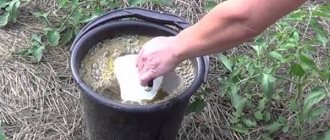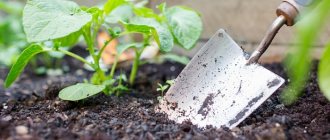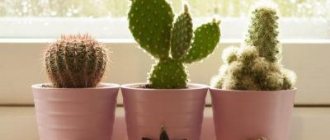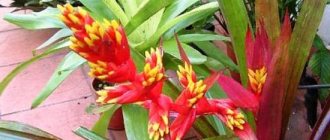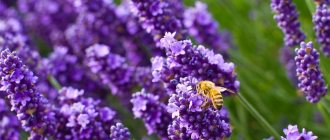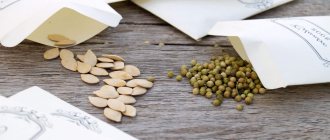Choosing a pot for a novice gardener can be a real headache. After all, there are so many of them in the store that your eyes just run wild. But you can’t rush into a purchase: your indoor plant should grow not only in the most beautiful pot, but also in the one most suitable for it.
Hello, friends! Today's post is dedicated to those who love and grow flowers at home. From time to time, plants require replanting, and this is where the question often arises for an inexperienced gardener: which plant should choose which pot?
In the store, my eyes widen: this pot is cute, and this one, and that one... After all, I want to buy pots that are not only beautiful, but also suitable in size for plants. How not to get confused in the huge assortment and choose the right pot for your green friend: so that both the flower is comfortable and the owners’ eyes are happy?
Let's figure it out. And let's start with the fact that there may be several criteria for choosing a new “place of residence” for your flower:
- pot size;
- the material from which it is made;
- form;
- color and texture.
Which of these criteria do you think is the most important based on plant preferences? I think you have guessed for yourself that the first thing you should pay attention to when choosing a pot in a store is its size.
My blog about indoor plants on Yandex Zen: come in, there’s a lot of interesting stuff there!
How to choose the right flower pot?
So, you bought a houseplant or the plants simply grew bigger and became cramped in the old pot; you need to replant them. Especially purchased indoor flowers are often sold in containers for transportation, transplanted into a new pot
simply necessary.
Flower pot sizes
Let's decide on the size of the flower pot. If the plants are tall and mature with massive leaves, they will need a large pot (for example, monstera, ficus, clerodendrum).
Plants such as violets, gloxinia, pelargonium and the like are better suited to small flower pots
.
Pay attention to the diameter and height of the pot. The height of the flower pot should be at least 1/3 of the height
the plant itself.
The diameter of the pot is selected as follows: the wider the crown of the plant, the wider the diameter of the flower pot. For plants with a height of 30 cm or more, a pot with a diameter of 20 cm or more is suitable. The ideal proportions of a pot are obtained when the diameter is equal to 2/3 of its height
.
When choosing a pot for very tall plants
, such as common myrtle, pay attention to the diameter of the base, it should be at least 1/3 of the height of the plant.
Return to contents
Don't overdo it
Although most often the need for repotting occurs when the plant “grows out” of its previous pot, sometimes it is necessary to select a smaller container. The choice of size directly depends on the aeration and moisture of the soil. And it’s definitely not worth buying pots “for growth”.
In this case, the soil will remain excessively wet for a long time, which can lead to rotting roots, yellowing of leaves and even death of plants.
Flower pots – what material to choose from?
Plants feel especially comfortable in clay and ceramic pots.
. One of the disadvantages of such a pot is fragility. It may break if dropped, you need to be careful. When reusing such pots, they must be disinfected.
For larger plants that sit on the floor, buy a plastic pot.
, it is much lighter than ceramic and it will be easier to move the plant.
The most practical and relatively cheap plastic pots
. Today there is a huge selection of plastic flower pots in stores.
Return to contents
Video – Flower pots
Our recommendations for a beginning florist.
If you are still afraid of making the wrong choice and have not fully understood how to choose a pot for an indoor flower. We decided to give universal advice that will allow you to avoid many care mistakes in the future. Use regular, cheapest plastic pots. They are sometimes called seedlings (or “for seedlings”). Indoor flowers are also sold in such pots in stores. They have many advantages. Large drainage holes allow excess water to drain during watering and significantly improve the air supply to the roots. They have a universal shape, that is, they are not high, not low, not narrow or wide. Such proportions allow the substrate to dry out more evenly, which means it will be “more difficult” for you to fill the flower. In such a pot you can successfully grow plants with both a superficial root system and those with deep roots. In addition, they are lightweight and easy to work with. When choosing a size, follow the paragraph “General rules for choosing a pot.” And for aesthetics, insert the pot into a beautiful flowerpot. By the way, in this way it is easy to solve the problem of a new interior design. Tired of the old design, just replace it with another flowerpot. Note that using this option does not even require a transplant. This means you will avoid unnecessary injury to the roots.
Subscribe to our channel on Telegram
Choosing the right flower pot
If you are going to replant and divide the plant bush, you will need several small pots.
When transplanting adult plants, choose a pot 1.5-2 cm larger
than the old pot. When replanting plants, a new soil mixture is partially added.
When replanting a young plant that continues to grow, you will need a pot 3 cm larger than the previous one.
When replanting fast-growing or large plants, and when the next replanting occurs in 2-3 years, select a pot 4 cm larger than the old one
.
If you have old flower pots in stock and want to use them, they must be disinfected and then dried. Chlorine-containing products are suitable for disinfection.
Return to contents
Regulating plant growth by pot size.
With the help of pots you can partially regulate the growth of plants. It is known that in larger containers the green part develops more intensively. Of course, subject to the necessary care. Accordingly, if you want to curb growth, you need to give preference to smaller diameters. The same applies to beautiful flowering plants. They grow foliage more intensively in larger pots. Therefore, it is also advisable to use small diameters for flowering. But for plants that are usually kept for the sake of beautiful leaves, you can take a larger pot than recommended to speed up growth. Of course, within reasonable limits. The most common way to regulate growth using small pots (along with other methods) is in the Bonsai technique.
A small pot is one of the techniques for inhibiting growth
Are drainage holes in flower pots necessary or not?
Flower pots for growing plants must have drainage holes
to drain excess water.
But there are pots that serve as decorative ones - flowerpots without drainage holes. The main disadvantage of pots is the accumulation of excess water at the bottom after watering, which leads to rotting of the roots and the development of various diseases.
If you purchased a pot without a hole, you can use a drill to carefully drill it. There should be one hole in the pot for every 10 cm2 of volume.
Subtleties of measurement
To correctly determine the size of a pot, you first need to figure out how to measure it correctly. There are different shapes of planters and they are all measured differently.
Giant obsidian “blade”, 20 thousand years old, discovered in China
The authorities of Montenegro have decided to simplify entry rules for tourists
An old stepladder, potted flowers and an armchair: how to turn a balcony into a cozy place
For example, the size of a round pot is determined by the diameter of its top. However, there is a catch: although the pots may have an identical diameter, this does not necessarily mean that they are the same size. Therefore, it is also worth comparing different containers based on the volume of soil that can fit in them.
Pots - how to use?
Such pots perform a decorative function. Flowerpots are made from various materials: ceramics, plastic, wood.
Often flower pots with plants are placed in flowerpots. Flowerpots give an interesting aesthetic appearance to the interior, but excess water must be drained every time after watering.
You can put moss between the walls of the flowerpot and pot, which will absorb excess water after watering, gradually evaporating the moisture. If you will be using a flowerpot
, as a way to increase humidity, you need to choose a size 3-4 cm wider than the pot that will stand inside.
Return to contents
Features of planting and growing aloe
Aloe belongs to the genus of succulents. This perennial plant comes from the dry regions of Africa. It is grown as an ornamental foliage and medicinal pot crop.
Caring for a flower is limited to creating the conditions under which it grows in the wild. Features of the growth of an inhabitant of the hottest corners of the earth:
- The lighting is intense; in winter, additional lighting may be required.
- The temperature is room temperature, in winter about +10…+14 °C.
- Watering: during the growing season after the top layer of soil has dried, in winter two days after the substrate gets rid of moisture.
- Fertilizing is useful mineral and nitrogen-containing, carried out in spring and summer with a frequency of 1 time per month. After transplantation, the plant does not need fertilizer for six months, since all the necessary nutrients are in the soil.
- Pests: aphids, scale insects, spider mites, mealybugs.
- Diseases occur only with improper care; the most common is rot, which develops with abundant watering.
In summer, the agave can be taken out into the fresh air, but it must be protected from precipitation.
Reference. Succulents are plants that have tissues to store water. Such organs were formed under conditions of acute lack of moisture in the soil. This group of plants grows in the arid regions of the planet: North and South America, Africa, Madagascar, and the Canary Islands.
Plant root system
Aloe has a fibrous root system, the shoots are long and cylindrical. The roots grow downward in a small cone. The older the specimen, the more powerful the underground organs.
The roots of all succulents are adapted to seek moisture even after light rain or heavy dew. In aloe, the areas responsible for water absorption are located at the tips of the roots. Therefore, it is better to water the flower in a tray.
Pots - types and choice
Classic flowerpots in pastel or neutral colors can highlight the beauty of plants.
Bright flowerpots will push the beauty of plants into the background, attracting with their original appearance.
Plain flowerpots
They will bring a certain style to your home, but sometimes, a strict selection of pots of the same color becomes monotonous and boring.
Many people like to decorate flowerpots with their own hands using various materials (pebbles, shells, beads) and needlework techniques.
Return to contents
Replanting a succulent
Aloe is replanted in spring or in the first half of summer. At this time, biological processes are activated. The plant recovers faster from a traumatic procedure and gets used to the new soil more easily.
Sometimes the plant does not take root in the new container. There are several reasons:
- The soil is not suitable, the leaves turn yellow. You need to prepare a different substrate or buy a soil mixture in the store.
- An infection has developed or the roots are damaged. The agave is taken out of the pot and the root is treated accordingly. They also replace the substrate and wash the pot with potassium permanganate.
- Violation of the regime of watering or feeding the plant. In this case, the errors made are eliminated.
Important. Despite the fact that aloe is undemanding in care, it is better not to touch it in winter and late autumn. This is a time of rest when all organs recover more slowly. Therefore, stress is less tolerated, which can cause the culture to die.
